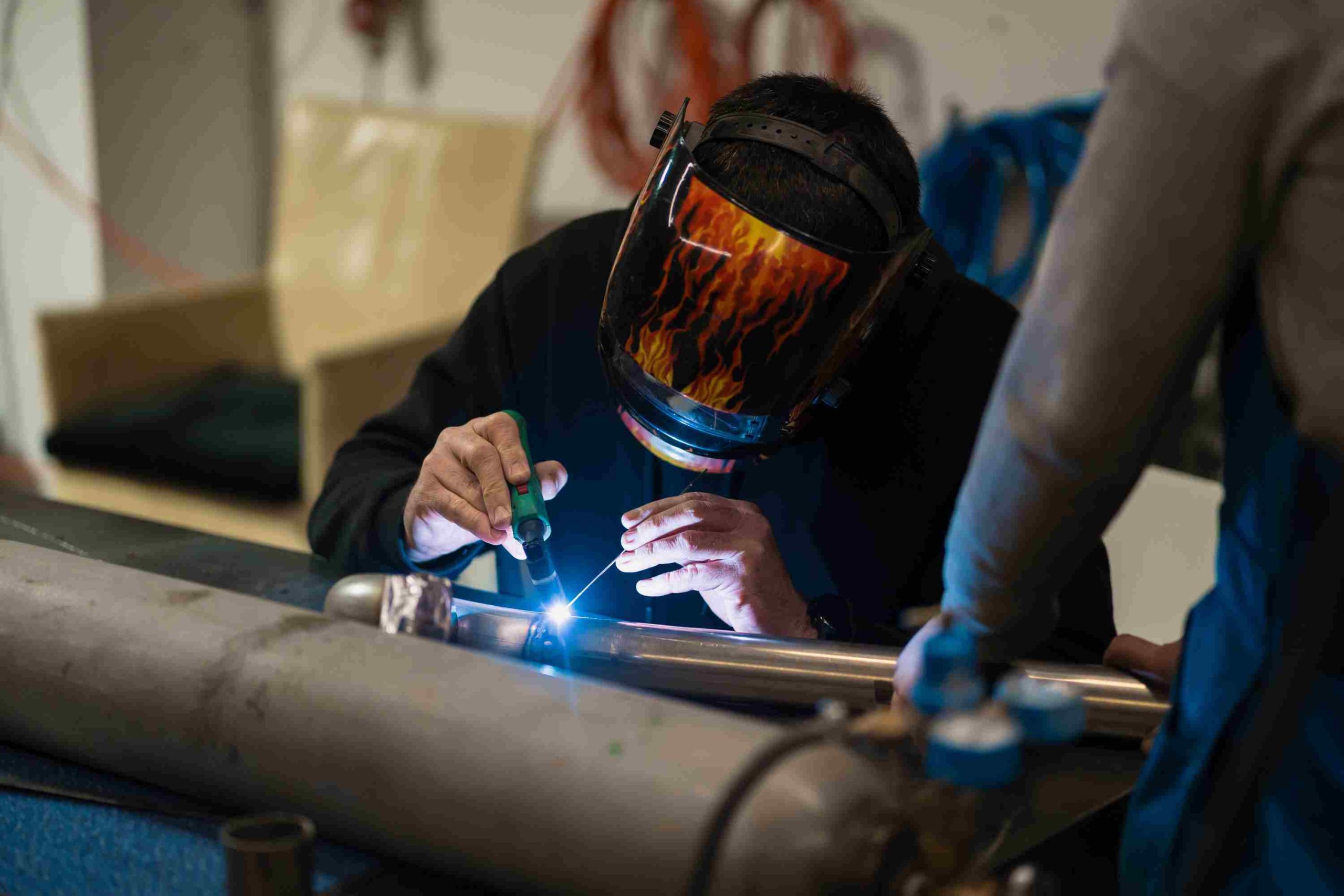
When we think of workplace hazards, we often picture things we can see and touch. But some of the most dangerous threats are invisible. Respirable particulates, tiny particles that can be inhaled deep into the lungs, pose a significant risk to workers in many industries across Alberta. This article will explore these silent dangers, with a specific focus on welding fume exposure in Alberta, and explain how effective management, often through industrial hygiene in Alberta, is critical for safety.
What Are Respirable Particulates?
Respirable particulates are airborne solid or liquid particles so small they bypass the body’s natural defense systems (like nose hairs and mucus) and travel deep into the lungs. These particles are measured in micrometres (µm). To give you an idea of how small they are, a single human hair is about 50 to 70 µm in diameter, while respirable particles are generally 10 µm or less. This includes a wide range of substances:
- Welding Fumes: A complex mixture of metallic oxides, silicates, and fluorides produced during the welding process. The exact composition depends on the materials being welded and the welding rods used.
- Silica Dust: Found in concrete, sand, and rock. Inhaling this can lead to silicosis, a serious lung disease.
- Wood Dust: A concern for carpenters and other woodworkers.
- Asbestos: A known carcinogen, still present in older buildings and materials.
The danger of these particles lies in their ability to accumulate in the lungs over time, leading to serious, and often irreversible, health problems.
Why Welding Fumes Are a Major Concern
Welding fume exposure in Alberta is a significant occupational health issue. Welders are often exposed to a mix of hazardous substances, including manganese, chromium, and nickel, all of which can have severe health effects. Short-term exposure can cause eye, nose, and throat irritation, while long-term exposure is linked to more serious conditions like:
- Chronic Obstructive Pulmonary Disease (COPD): A group of progressive lung diseases.
- Asthma: A chronic respiratory condition.
- Metal Fume Fever: A flu-like illness that can occur after a short but high exposure.
- Cancer: Certain components in welding fumes, such as chromium and nickel compounds, are known carcinogens.
Because welding is a common task in Alberta’s oil and gas, construction, and manufacturing sectors, managing this risk is a top priority for employers.
The Role of Industrial Hygiene
This is where Industrial Hygiene Alberta comes in. Industrial hygienists are professionals who anticipate, recognize, evaluate, and control workplace hazards. When it comes to respirable particulates, their work is essential:
- Hazard Identification and Assessment: They first identify potential sources of respirable particulates. They then conduct a thorough risk assessment to determine the level of exposure workers face.
- Air Monitoring: A key part of the process is air monitoring in the workplace in Alberta. This involves using specialized equipment to measure the concentration of airborne contaminants in the breathing zone of a worker. The results are then compared against established Occupational Exposure Limits (OELs) set by the Alberta government.
- Control Measures: Based on the assessment and monitoring, hygienists recommend and help implement control measures. This follows the same hierarchy of controls used for other hazards:
- Elimination/Substitution: Is it possible to use a different process or material that produces fewer fumes?
- Engineering Controls: This is the most effective approach for particulates. Examples include dust control in the workplace in Alberta through local exhaust ventilation (LEV) systems, such as fume extractors at the source of welding.
- Administrative Controls: This can include limiting the time a worker spends on a task that generates particulates or setting up work schedules to reduce exposure.
- Personal Protective Equipment (PPE): When other controls aren’t enough, workers must be provided with and trained on the proper use of respiratory protection, such as N95 respirators or powered air-purifying respirators (PAPRs).
Read More: Why Welding Fume Testing is Crucial for Alberta Worker Safety
The Importance of a Proactive Approach
Ignoring respirable particulates is not an option. Alberta’s Occupational Health and Safety (OHS) legislation requires employers to protect workers from these hazards. A proactive approach is not only a legal requirement but also a moral one. It prevents long-term health issues for workers, reduces the risk of costly OHS fines, and improves overall productivity by creating a healthier workforce.
Implementing proper air monitoring workplace Alberta programs, and using the right control measures, employers can effectively manage this silent threat. Investing in a robust industrial hygiene Alberta program is an investment in the health and safety of your most valuable asset: your people.
Looking for expert guidance on managing airborne hazards? Contact Ask Environmental’s Occupational Safety Experts today to ensure your workplace is safe and compliant.
